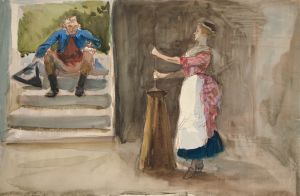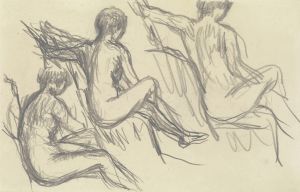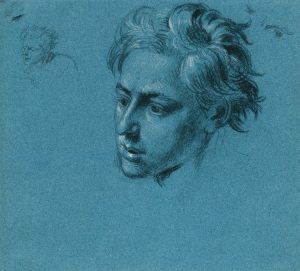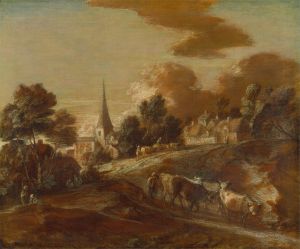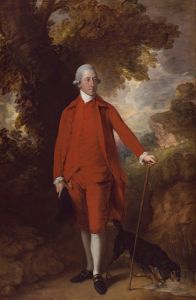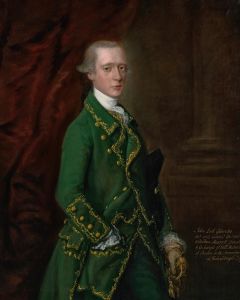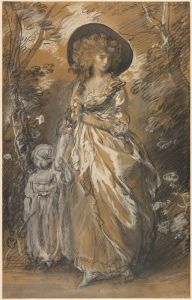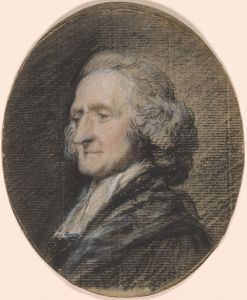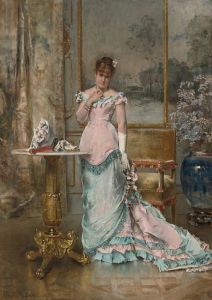
Mrs. William Monck
A hand-painted replica of Thomas Gainsborough’s masterpiece Mrs. William Monck, meticulously crafted by professional artists to capture the true essence of the original. Each piece is created with museum-quality canvas and rare mineral pigments, carefully painted by experienced artists with delicate brushstrokes and rich, layered colors to perfectly recreate the texture of the original artwork. Unlike machine-printed reproductions, this hand-painted version brings the painting to life, infused with the artist’s emotions and skill in every stroke. Whether for personal collection or home decoration, it instantly elevates the artistic atmosphere of any space.
Thomas Gainsborough, one of the most prominent British portrait and landscape painters of the 18th century, created the painting known as "Mrs. William Monck." Gainsborough was renowned for his ability to capture the elegance and grace of his subjects, and his work is characterized by its delicate brushwork and sophisticated use of color. While specific details about the painting "Mrs. William Monck" are limited, it is consistent with Gainsborough's style and his focus on portraiture during this period.
Gainsborough was born in 1727 in Sudbury, Suffolk, and he demonstrated an early talent for drawing. He moved to London in his teens to study art and later established himself as a portrait painter. His career flourished, and he became a founding member of the Royal Academy in 1768. Gainsborough's portraits were highly sought after by the British aristocracy, and he painted many notable figures of his time.
The painting "Mrs. William Monck" likely depicts a woman from the British upper class, as was common in Gainsborough's work. His portraits often featured sitters in fashionable attire, set against naturalistic backgrounds that highlighted their status and refinement. Gainsborough's ability to render the textures of fabrics and the subtleties of skin tones contributed to his reputation as a master portraitist.
Gainsborough's technique involved the use of light, feathery brushstrokes that gave his paintings a sense of movement and vitality. He often employed a palette of soft, harmonious colors, which added to the elegance of his compositions. In "Mrs. William Monck," these elements would be expected to create a sense of intimacy and immediacy, drawing the viewer into the world of the sitter.
Throughout his career, Gainsborough maintained a keen interest in landscape painting, which influenced his approach to portraiture. He often incorporated elements of the natural world into his portraits, using trees, foliage, and skies as backdrops that complemented the figures. This integration of landscape and portraiture is a hallmark of Gainsborough's style and contributes to the enduring appeal of his work.
While specific information about the identity of Mrs. William Monck and the circumstances of the painting's commission is not readily available, the work remains an example of Gainsborough's skill in capturing the likeness and character of his subjects. His portraits are celebrated for their ability to convey the personality and social standing of the individuals he painted, making them valuable historical records of 18th-century British society.
Gainsborough's legacy as a portrait painter is significant, and his works continue to be studied and admired for their artistic merit and historical importance. "Mrs. William Monck," like many of his portraits, exemplifies the qualities that have made Gainsborough one of the most esteemed artists of his time. His contributions to the art of portraiture have left a lasting impact, influencing generations of artists who followed in his footsteps.






